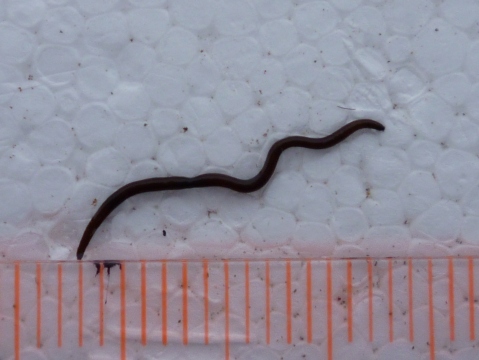

"When I see the ice worms, I always think of this like alien oil.They're basically like little stringy, black, oily worms. He says the worms even remind him of aliens. Palmer takes videos of the tiny worms every chance he gets. "There's got to be life on Europa, on the moons of Jupiter under the ice, we have ice worms here on Earth!" He added that with that thought, he "went down the rabbit hole on ice worms and became obsessed." "I got fascinated with these extremophiles that live in this environment," he told AccuWeather. "We try to understand the distribution and extent of life on the Earth in order to inform our ability to look for life elsewhere."Ī post shared by what excites mountaineer Adam Palmer, who teaches high school students alpine climbing in British Columbia and regularly sees ice worms. "If we're interested in looking for life on ice-enshrouded worlds, then understanding how life on Earth has evolved and adapted to living under those conditions is an important thing for NASA to know," Michael New, an astrobiology scientist at NASA, told NPR. Ultimately, his findings could offer clues as to how life can exist in extreme environments, maybe unlocking mysteries about possible life on other planets or chilly moons. Dan Shain, an evolutionary biologist at Rutgers University who researches the survival of the ice worm in extreme conditions, more than $200,000 toward his research. "They actually have a lot of pigment, which I think is largely to absorb heat from solar radiation and that's why they come out to be at the surface, get some heat," he told AccuWeather, adding that it "helps their metabolism and various biochemistry while they're also feeding in the soft upper layer of snow." The worms have barely been studied so researchers aren't sure why, but Hotaling says they are extremely tolerant of UV rays and thinks they come up to get heat energy from the sun and find food. Ice worms typically emerge in the afternoon and at dusk. "It's kind of hilarious in a way that this is worm is living in ice and can't actually survive freezing, but it's also really interesting ecologically because they are living extremely close to their lower thermal limit," Hotaling said. Hotaling has conducted thermal testing and says the ice worms can survive comfortably for at least a day or two in temperatures as high as 75 degrees Fahrenheit (around 24 degrees Celsius), and although they thrive at temperatures around 32 degrees Fahrenheit (zero degrees Celsius), they die when temperatures drop below that threshold. They may spend their entire lives in snow and ice, but ice worms can't survive subfreezing temperatures. Instead of dirt, these worms wiggle through glacial ice eating snow algae, bacteria and anything else that ends up on the snow. The inky, black ice worms are only about an inch long and are distant cousins to earthworms. Ice worms emerge on Paradise Glacier, Mount Rainier, Washington.


 0 kommentar(er)
0 kommentar(er)
